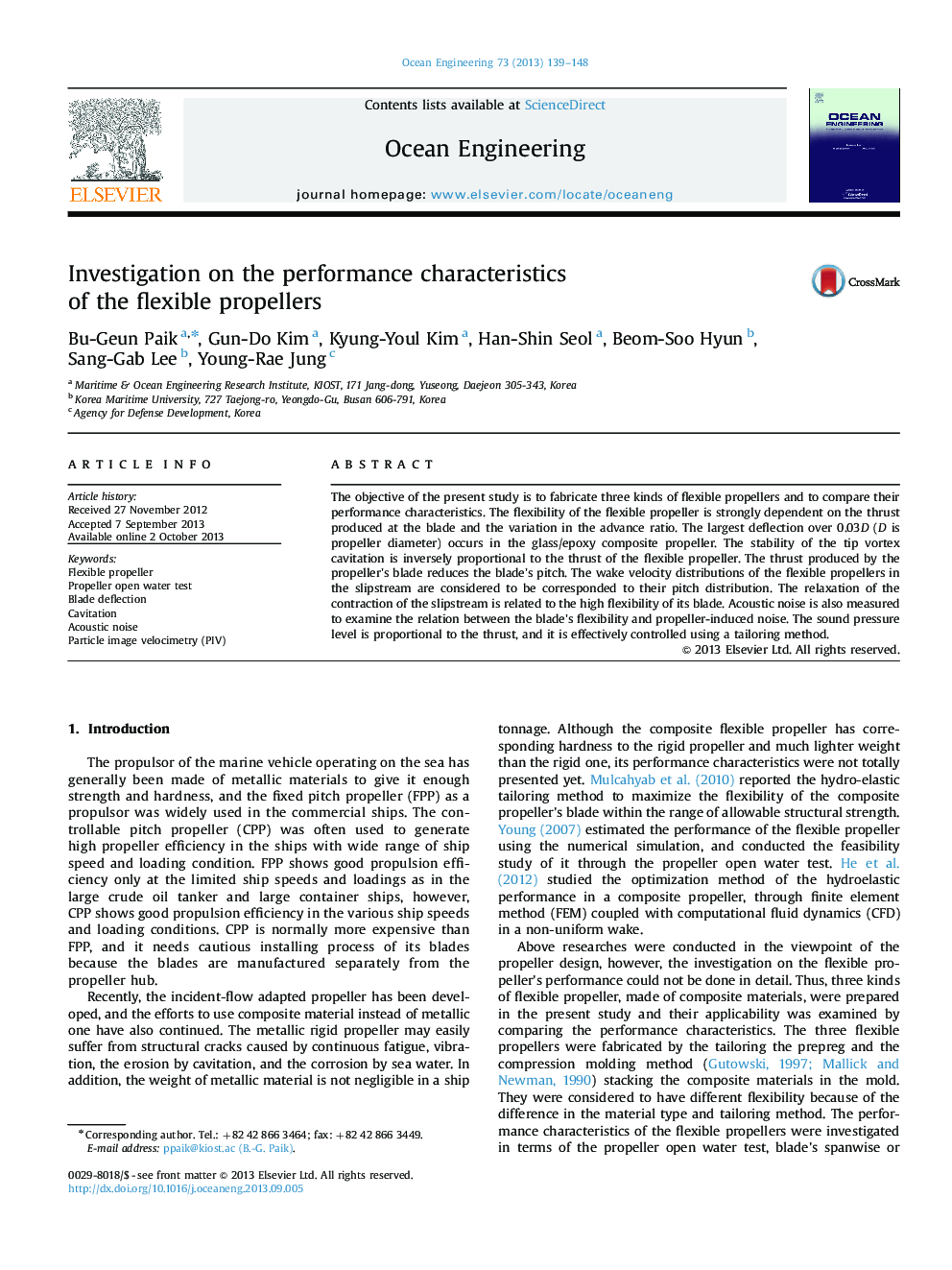| Article ID | Journal | Published Year | Pages | File Type |
|---|---|---|---|---|
| 1725813 | Ocean Engineering | 2013 | 10 Pages |
Abstract
The objective of the present study is to fabricate three kinds of flexible propellers and to compare their performance characteristics. The flexibility of the flexible propeller is strongly dependent on the thrust produced at the blade and the variation in the advance ratio. The largest deflection over 0.03D (D is propeller diameter) occurs in the glass/epoxy composite propeller. The stability of the tip vortex cavitation is inversely proportional to the thrust of the flexible propeller. The thrust produced by the propeller's blade reduces the blade's pitch. The wake velocity distributions of the flexible propellers in the slipstream are considered to be corresponded to their pitch distribution. The relaxation of the contraction of the slipstream is related to the high flexibility of its blade. Acoustic noise is also measured to examine the relation between the blade's flexibility and propeller-induced noise. The sound pressure level is proportional to the thrust, and it is effectively controlled using a tailoring method.
Related Topics
Physical Sciences and Engineering
Engineering
Ocean Engineering
Authors
Bu-Geun Paik, Gun-Do Kim, Kyung-Youl Kim, Han-Shin Seol, Beom-Soo Hyun, Sang-Gab Lee, Young-Rae Jung,
